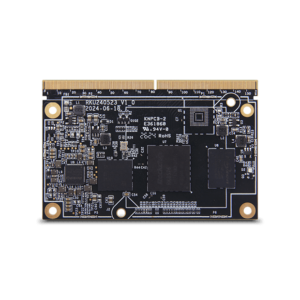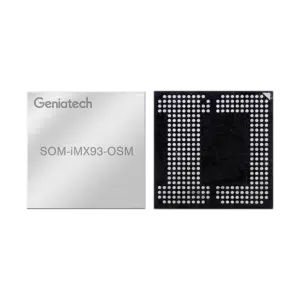How System on Modules Are Powering the Future of Smart Devices
How System on Modules Are Powering the Future of Smart Devices
Blog Article
Embedded systems will always be at the lead of technical development, driving everything from medical products and professional equipment to electronic devices and IoT solutions. Yet, a game-changing engineering is taking their possible to an entirely new level—enter Pc on Adventures (CoMs). These lightweight, high-performance research boards are emerging as a pivotal solution, streamlining stuck system design and revolutionizing how industries method electronics and system on module arm.

What Are Computer on Segments?
A Pc on Module is essentially a small pc embedded right into a single, compact board. It includes all the conventional aspects of a normal computer, including a processor, memory, energy administration, and input/output connectivity. However, as an alternative to be a standalone system, it's designed to seamlessly include in to bigger techniques via custom provider boards. This modular design allows designers to produce customized stuck systems while leveraging a pre-validated processing primary, keeping both time and resources.
Why CoMs Are Transforming Embedded Methods
1. Racing Up Time-to-Market
One key advantage of CoMs is their ability to accelerate item growth timelines. Their pre-built and pre-tested designs let companies to concentrate on customizing the company table to meet up certain program wants, as opposed to planning the foundational research module from scratch. That quick development product has empowered industries to bring items to market faster, giving corporations a vital aggressive edge.
2. Simplifying Improvements
Typically, improving embedded methods required an entire overhaul of hardware components, which may be expensive and labor-intensive. CoMs handle this problem by providing modularity. Designers may change just the element while keeping the company board, making it somewhat easier and more cost-effective to undertake new technologies and enhance program performance.
3. Increasing Scalability and Flexibility
With different CoM adjustments available, from low-power ARM-based adventures to high-performance x86 versions, scalability is really a key feature. Developers can easily change a CoM to match a wide spectral range of use cases, from lightweight IoT devices to effective machine perspective platforms.
4. Streamlining the Prototyping Process
Designing prototypes could be resource-heavy, especially for stuck methods that require a top degree of precision and reliability. CoMs simplify this technique by giving developers a reliable, high-quality bottom that reduces the chance of mistakes throughout the initial phases of development.
Driving Advancement Across Industries
Pc on Adventures are breathing new living in to many different industries. Healthcare devices are becoming more compact and effective, industrial automation is experiencing unmatched precision, and IoT programs are getting better and more scalable. CoMs are not only revolutionizing embedded systems—they are paving the way in which for another described by modularity, mobility, and quick innovation.
As CoMs carry on increasing traction, one thing is clear—they are rewriting the rules of stuck systems design and shaping the following trend of technological breakthroughs. From little startups to global corporations, companies across industries are embracing this powerful engineering and driving creativity forward. The continuing future of stuck programs has never seemed brighter. #
Growing the Affect of CoMs in Numerous Applications

CoMs are not only restricted to conventional embedded process applications; their possible is vast and diverse. As more industries recognize the advantages of CoMs, they're being integrated into a wide selection of programs, from wise properties and wearable products to autonomous vehicles and advanced robotics. These lightweight computing modules have opened up new possibilities for development, enabling developers to push the boundaries of what was previously thought possible.
Report this page